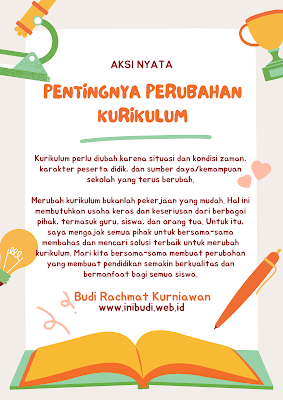Abjad O
JEJAK
MAHASISWA
|
|
Dibuat
12/19/2011 | ||||||||||||||
|---|---|---|---|---|---|---|---|---|---|---|---|---|---|---|---|---|
| A | B | C | D | E | F | G | H | I | J | K | L | M | ||||
| N | O | P | Q | R | S | T | U | V | W | X | Y | Z | ||||
obligate aerobe
(OB-lig-it AIR-obe) An organism that requires oxygen for cellular respiration and cannot live without it.
obligate anaerobe
(AN-ur-obe) An organism that cannot use oxygen and is poisoned by it.
oceanic zone
The region of water lying over deep areas beyond the continental shelf.
oligotrophic lake
A nutrient-poor, clear, deep lake with minimum phytoplankton.
omnivore
A heterotrophic animal that consumes both meat and plant material.
oncogene
(ON-koh-jeen) A gene found in viruses or as part of the normal genome that is involved in triggering cancerous characteristics.
ontogeny
(on-TOJ-en-ee) The embryonic development of an organism.
oogamy
(oh-OG-um-ee) A condition in which male and female gametes differ, such that a small, flagellated sperm fertilizes a large, nonmotile egg.
oogenesis
(OO-oh-JEN-eh-sis) The process in the ovary that results in the production of female gametes.
open circulatory system
An arrangement of internal transport in which blood bathes the organs directly and there is no distinction between blood and interstitial fluid.
operant conditioning
(OP-ur-ent) A type of associative learning that directly affects behavior in a natural context; also called trial-and-error learning.
operon
(OP-ur-on) A unit of genetic function common in bacteria and phages, consisting of coordinately regulated clusters of genes with related functions.
organ of Corti
The actual hearing organ of the vertebrate ear, located in the floor of the cochlear canal in the inner ear; contains the receptor cells (hair cells) of the ear.
organ
A specialized center of body function composed of several different types of tissues.
organelle
(OR-guh-NEL) One of several formed bodies with a specialized function, suspended in the cytoplasm and found in eukaryotic cells.
organic chemistry
The study of carbon compounds (organic compounds).
organic compound
A chemical comound containing the element carbon and usually synthesized by cells.
organ-identity gene
A plant gene in which a mutation causes a floral organ to develop in the wrong location.
organism
An individual living thing, such as a bacterium, fungus, protist, plant or animal.
organogenesis
(or-GAN-oh-JEN-eh-sis) An early period of rapid embryonic development in which the organs take form from the primary germ layers.
orgasm
Rhythmic, involuntary contractions of certain reproductive structures in both sexes during the human sexual response cycle.
osmoconformer
An animal that does not actively adjust its internal osmolarity because it is isotonic with its environment.
osmolarity
(OZ-moh-LAR-eh-tee) Solute concentration expressed as molarity.
osmoregulation
Adaptations to control the water balance in organisms living in hypertonic, hypotonic, or terrestrial environments.
osmoregulator
An animal whose body fluids have a different osmolarity than the environment, and that must either discharge excess water if it lives in a hypotonic environment or take in water if it inhabits a hypertonic environment.
osmosis
(oz-MOH-sis) The diffusion of water across a selectively permeable membrane.
osmotic pressure
(oz-MOT-ik) A measure of the tendency of a solution to take up water when separated from pure water by a selectively permeable membrane.
Osteichthyes
The vertebrate class of bony fishes, characterized by a skeleton reinforced by calcium phosphate; the most abundant and diverse vertebrates.
ostracoderm
(os-TRAK-uh-durm) An extinct agnathan; a fishlike creature encased in an armor of bony plates.
ova
See ovum.
ovarian cycle
(oh-VAIR-ee-un) The cyclic recurrence of the follicular phase, ovulation, and the luteal phase in the mammalian ovary, regulated by hormones.
ovary
(OH-vur-ee) (1) In flowers, the portion of a carpel in which the egg-containing ovules develop. (2) In animals, the structure that produces female gametes and reproductive hormones.
oviduct
(OH-veh-dukt) A tube passing from the ovary to the vagina in invertebrates or to the uterus in vertebrates.
oviparous
(oh-VIP-ur-us) Referring to a type of development in which young hatch from eggs laid outside the mother's body.
ovoviviparous
(OH-voh-vy-VIP-ur-us) Referring to a type of development in which young hatch from eggs that are retained in the mother's uterus.
ovulation
The release of an egg from ovaries. In humans, an ovarian follicle releases an egg during each menstrual cycle.
ovule
(OV-yool) A structure that develops in the plant ovary and contains the female gametophyte.
ovum
(OH-vum) The female gamete; the haploid, unfertilized egg, which is usually a relatively large, nonmotile cell.
oxidation
The loss of electrons from a substance involved in a redox reaction.
oxidative phosphorylation
(FOS-for-eh-LAY-shun) The production of ATP using energy derived from the redox reactions of an electron transport chain.

Comments
Post a Comment
Komentar teman-teman saya tunggu!